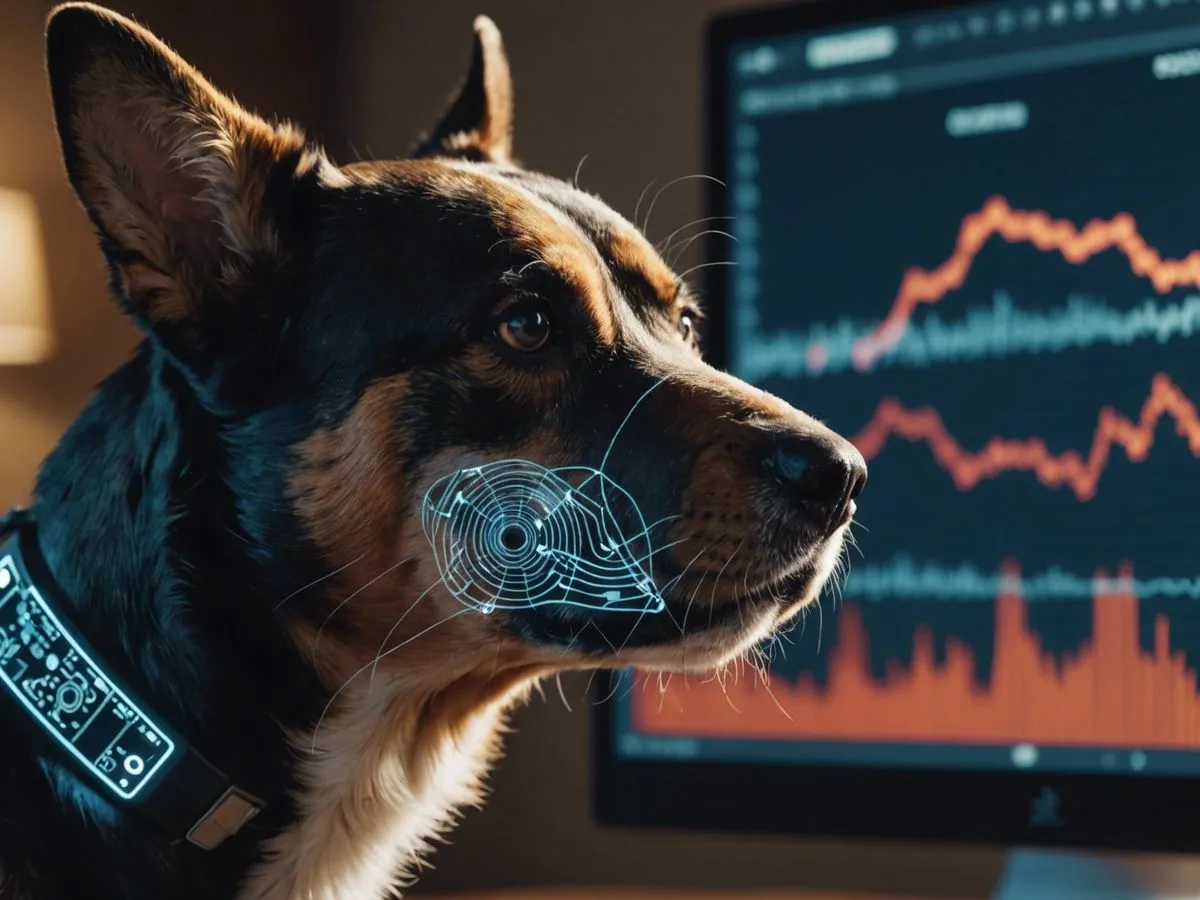Artificial intelligence is increasingly being used to bridge the communication gap between humans and animals. Researchers worldwide are training AI models to interpret animal emotions, potentially revolutionizing how we care for, treat, and interact with animals. From detecting pain in livestock to recognizing distress in pets, these AI-driven systems could transform animal welfare and even deepen our understanding of interspecies communication.
AI-Powered Emotional Recognition in Animals
The idea of decoding animal emotions is not new—scientists and behaviorists have long studied how animals express pain, distress, and happiness. However, advancements in AI and machine learning have enabled researchers to analyze animal expressions with unprecedented accuracy and speed.
For instance, researchers at the University of the West of England Bristol and Scotland’s Rural College have developed a system called Intellipig. This AI model examines images of pigs' faces and alerts farmers if the animals show signs of pain, illness, or emotional distress. By monitoring their expressions, farmers can take proactive measures to improve the well-being of their livestock, potentially preventing disease outbreaks and reducing unnecessary suffering.

Similarly, a research team at the University of Haifa is working on AI-powered facial recognition software for dogs. Their system, initially developed to help locate lost pets, is now being trained to identify signs of discomfort in dogs' faces. Interestingly, dogs share about 38% of their facial movements with humans, making them particularly suitable for this kind of technology. By detecting subtle changes in facial expressions, the AI can alert pet owners and veterinarians to potential health issues before they become severe.
Training AI to Detect Pain in Horses
One of the most promising breakthroughs in AI-animal communication comes from a study conducted at the University of São Paulo. Researchers trained an AI system using images of horses' faces taken before and after surgery, as well as before and after they received painkillers. The AI focused on key facial features—eyes, ears, and mouths—to learn what signs indicate pain. Impressively, the system achieved an 88% success rate in identifying discomfort, demonstrating its potential for aiding veterinarians and horse caretakers.
Traditionally, veterinarians and animal caretakers rely on behavioral cues and physical examinations to assess pain levels in animals. However, animals, especially prey species like horses, often mask their pain to avoid appearing vulnerable. This AI-driven approach offers a more reliable and objective method of pain detection, allowing for quicker medical intervention and improved animal welfare.
How AI Interprets Animal Emotions
AI systems designed to interpret animal emotions typically follow a structured learning process:
-
Data Collection: Researchers gather thousands of images or videos of animals in various emotional states. These images are often labeled manually by experts who identify different expressions, postures, or sounds associated with specific emotions.
-
Machine Learning Training: The AI model is trained using this labeled dataset. By analyzing the subtle changes in facial muscles, body language, and vocalizations, the AI begins to recognize patterns associated with different emotional states.
-
Validation and Testing: The trained AI is tested against new data to determine its accuracy in detecting emotions. If necessary, the model is fine-tuned to improve its predictive capabilities.
-
Deployment in Real-World Scenarios: Once validated, the AI can be integrated into practical applications, such as farm monitoring systems, veterinary diagnostic tools, or even consumer-grade pet monitoring devices.

The Ethical and Practical Implications
While the potential of AI to interpret animal emotions is exciting, it also raises important ethical and practical considerations. One key concern is the accuracy and reliability of these systems. Although an 88% success rate in pain detection is impressive, it still leaves room for error. Misinterpretation of animal expressions could lead to unnecessary interventions or overlooked distress.
Additionally, privacy and data collection issues need to be addressed, particularly when integrating AI into pet monitoring devices. How will data be stored and used? Will pet owners have control over their animals' emotional data? Establishing ethical guidelines for AI-driven animal monitoring will be crucial as the technology develops.
Another consideration is the bias in AI training datasets. Most AI models are trained on specific breeds, species, or controlled environments. However, animals have unique expressions based on breed, genetics, and environment. To ensure AI systems are universally effective, researchers must diversify training data to include a wide range of species and individual variations.
The Future of AI in Animal Welfare
The integration of AI into animal welfare practices is still in its early stages, but the possibilities are vast. Beyond detecting pain, future AI models could potentially interpret a wider range of animal emotions, from excitement to fear, curiosity, or even boredom.
Imagine a world where farmers receive real-time alerts when livestock are stressed, enabling better herd management and reducing the need for antibiotics. Pet owners could get instant notifications if their dog or cat is feeling unwell, allowing for earlier veterinary intervention. Wildlife conservationists could use AI-powered emotion detection to monitor the well-being of endangered species without invasive procedures.
Moreover, AI could help bridge the communication gap between humans and animals, fostering deeper emotional bonds. Some researchers speculate that AI-driven emotional interpretation could lead to the development of real-time animal translation devices, much like the fictional technology seen in movies.
Artificial intelligence is opening up new frontiers in understanding animal emotions. By training AI to recognize signs of pain, stress, and discomfort, researchers are paving the way for improved animal welfare across industries, from farming to veterinary medicine and pet care. While challenges remain in ensuring accuracy and ethical implementation, the potential benefits of AI-driven emotional interpretation are undeniable.
As AI technology continues to evolve, the dream of a world where humans and animals communicate more effectively could become a reality. The ability to truly understand what our pets and livestock feel may no longer be a matter of speculation but a scientific achievement within reach.


-1708740189.jpg)

-1711524316-q80.webp)